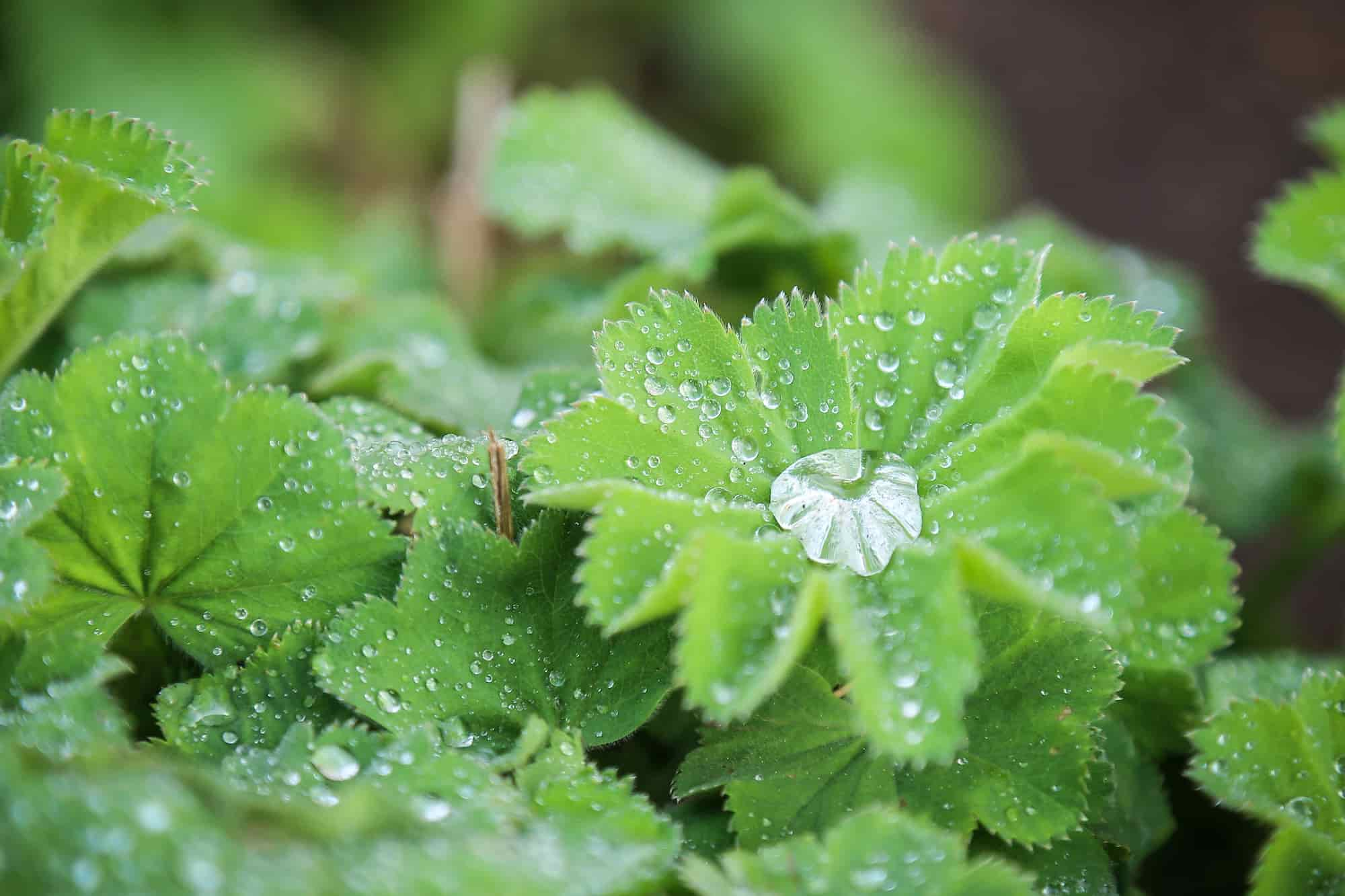
How to choose an alchemilla?
Our buying guide to choose the right lady's mantle for your needs
Contents
Perennial plant from the Rosaceae family, Lady’s Mantle stands out for its abundant flowering in a rare colour for the garden. Indeed, in spring, the foliage almost disappears beneath a dense carpet of small flowers that range in colour from green to yellow. As for its foliage, it has the unique characteristic of being water-repellent, with its leaves forming basins that delicately cradle beads of rain or dew. A medicinal plant recognised for its virtues, it is also noteworthy for its exceptional hardiness and adaptability to various growing conditions and environments. Discover our buying guide to make the right choice among the different varieties of Lady’s Mantle.
According to its height
Lady’s mantle is a herbaceous plant that develops into vigorous and relatively dense clumps. Its lovely foliage forms carpet-like cushions, perfect as groundcover or at the base of bushes depending on their size. However, depending on the varieties, lady’s mantle can reach varying heights.
The tallest varieties
The size and spread of lady’s mantles vary from species to species. To dress a flowerbed, border, or fill the space left at the base of bushes or trees, it is ideal to choose taller varieties:
- Alchemilla mollis: also known as Lady’s mantle, it is the tallest of all as its foliage can form generous clumps of 40 to 50 cm in height, even reaching 60 cm under optimal growing conditions. It spreads spontaneously by at least the same amount in width, risking becoming somewhat invasive. Ideal in mixed borders, flowerbeds, shrub borders, or along pathways.
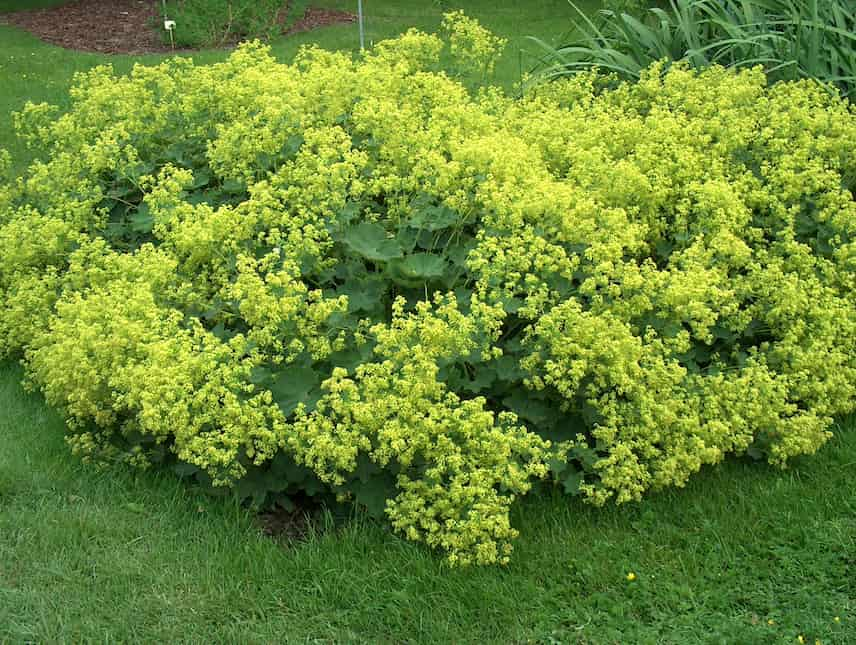
Alchemilla mollis can reach 40 to 50 cm in height
- Alchemilla epipsila: very close to Alchemilla mollis, it has a more compact habit. Thanks to its rootstock, Alchemilla epipsila quickly produces a carpet-like cushion that reaches 30 cm in height. Perfect in a flowerbed alongside roses or to edge a pathway.
- Alchemilla erythropoda: slightly smaller than Alchemilla mollis, this lady’s mantle only reaches 25 to 30 cm on average. It is also distinguished by its round, dentate foliage. It is suitable for creating a border in a perennial flowerbed or in a rock garden.
- Alchemilla caucasica or Caucasian lady’s mantle: it is characterised by its dense and particularly bushy habit of 30 cm in all directions. Ideal as groundcover.
- Alchemilla sericata: its very compact habit forms a tight cushion of grey-green leaves that can reach 35 cm in height. Perfectly suited for the edge of a flowerbed, for example, near a water feature.
- L’Alchemilla xanthochlora or meadow lady’s mantle: its stems rise to about 50 cm and form significant clumps.
The shortest varieties
Other varieties of lady’s mantle are more suited to rock gardens due to their small size.
- Alchemilla alpina or alpine lady’s mantle: native to rocky meadows, it allows for greening a wall or slope. Small in size, the alpine lady’s mantle hardly exceeds 10 to 20 cm in height while forming silvery clumps. As it is very spreading, it can green a slope, rock garden, or wall.
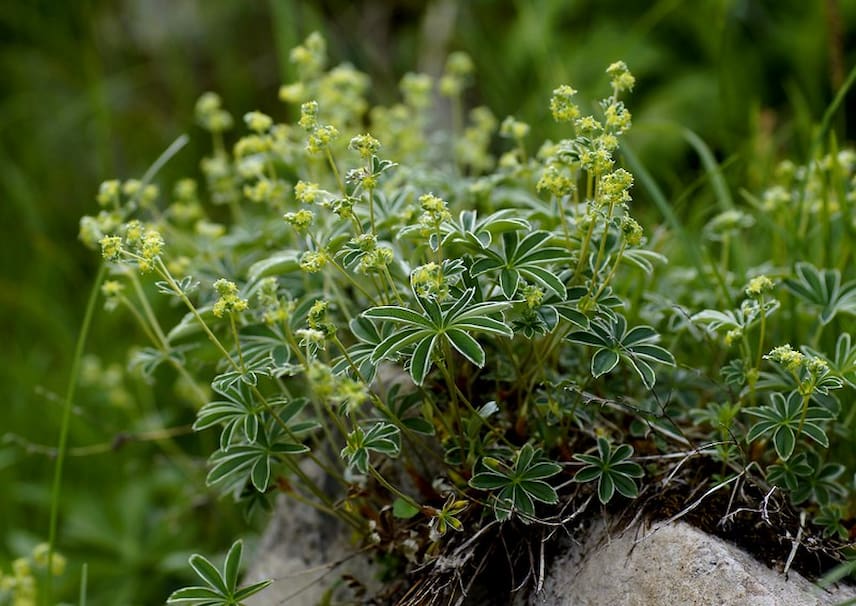
Alchemilla alpina hardly exceeds 10 to 20 cm
- Alchemilla ellenbeckii: very interesting for its covering and creeping abilities, Alchemilla ellenbeckii is the smallest of all as it reaches a maximum height of 10 cm. It is also remarkable for its green foliage and red stems that create a successful contrast. Perfect as a covering groundcover.
Read also
Alchemilla: planting, growing and careDepending on its foliage
Lady’s mantle is covered with deciduous palmate-lobed leaves that mostly possess water-repellent properties. This ability to retain raindrops or dew gives them an incredible charm. Imagine the sun shining on these thousands of water droplets, delightfully nestled in the leaves adorned with a slight fuzz… Depending on the varieties, the foliage will vary in shape and colour.
Rounded foliage
Some lady’s mantles have round leaves, more or less lobed and well-marked with veins.
- Alchemilla epipsila has remarkable foliage, soft to the touch, consisting of almost circular leaves with veins radiating from the petiole. Bluish-green in colour, they are slightly dentate.
- Alchemilla sericata: the leaves of this lady’s mantle are deeply lobed and practically circular, finely dentate at the edges. Their hue varies around grey-green.
- Alchemilla vulgaris: its round leaves have a strong water-repellent power, making them true basins for dew droplets. The leaves are rather light green on both sides.
Crenate foliage
- Alchemilla caucasica: the foliage of this lady’s mantle is particularly crenate with a saw-toothed edge.
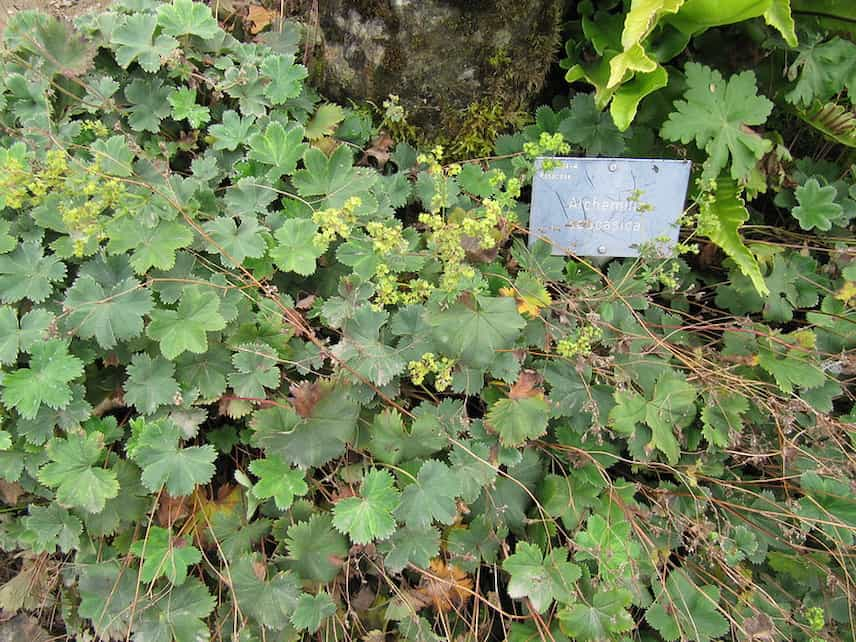
the foliage of Alchemilla caucasica is very crenate
Palmatifid foliage
- Alchemilla erythropoda: this lady’s mantle features palmate foliage and pubescent leaves of a beautiful bluish-green.
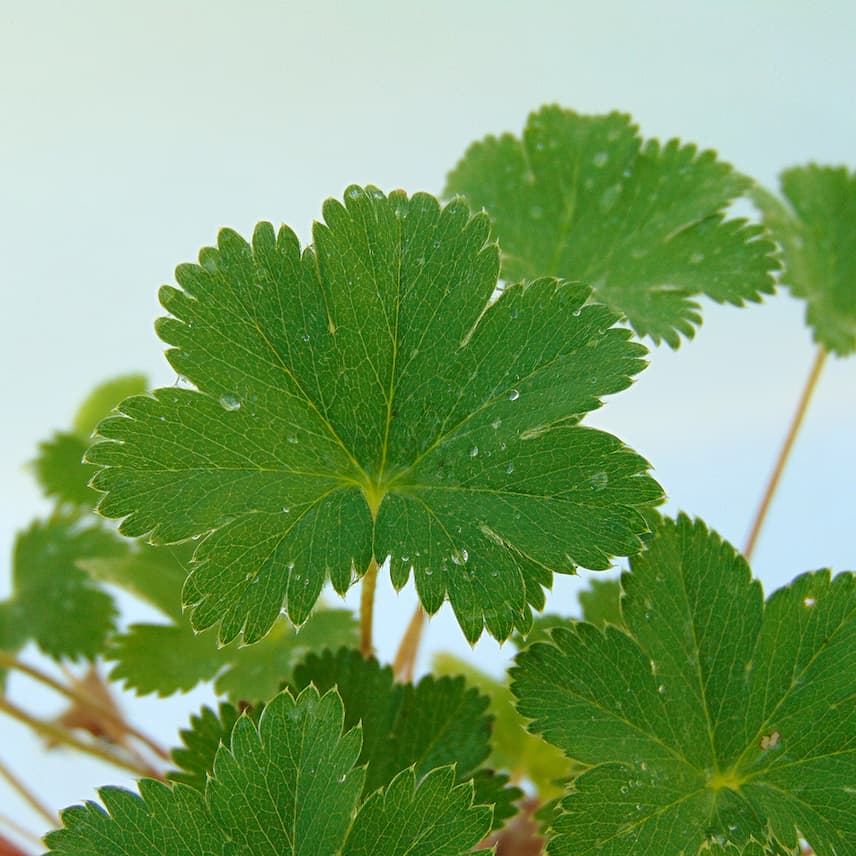
The foliage of Alchemilla erythropoda is palmate and pubescent
- Alchemilla alpina: its leaves are deeply lobed, glossy on the top and silvery and silky on the underside. The shape of the foliage resembles a hand.
Discover other Alchemilla
View all →Available in 2 sizes
Available in 3 sizes
Available in 1 sizes
Available in 3 sizes
Available in 1 sizes
Available in 1 sizes
Available in 1 sizes
Available in 1 sizes
Regarding soil type
While lady’s mantle prefers heavy, cool soils, some varieties can adapt to drier conditions. Similarly, they can thrive in shallow soils, a characteristic that makes them ideal plants for rockeries. Above all, they are not afraid of drought and arid soils.
Those that prefer humus-bearing soils
Most lady’s mantle enjoys humid, heavy, clayey soils, but they must be well-drained. Thus, locations at the foot of trees or bushes are appealing to lady’s mantle as they are cool and rich in humus. Therefore, if your soil is humus-bearing, favour:
- Alchemilla vulgaris thrives in humus-bearing, cool soil where its foliage will reach its full potential.
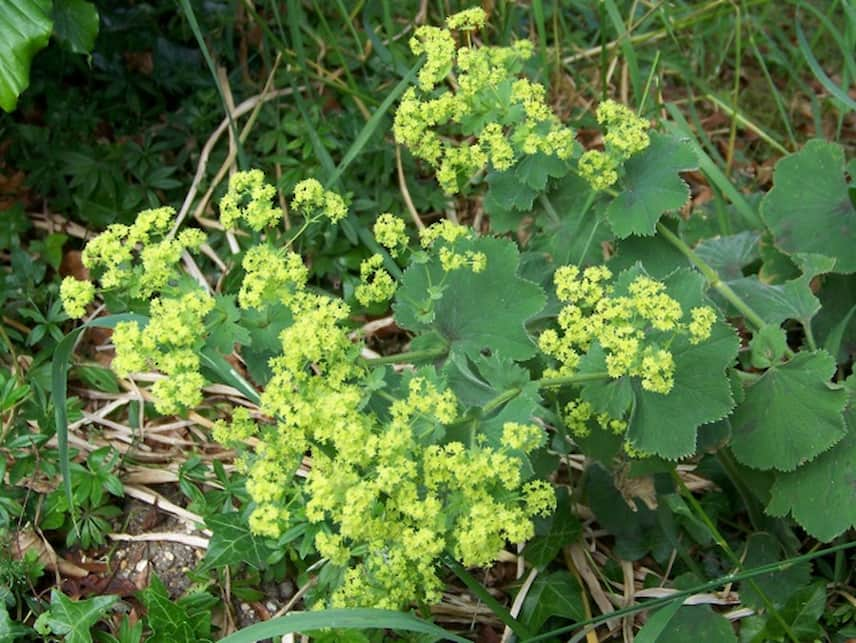 Alchemilla vulgaris loves humus-bearing, cool soils
Alchemilla vulgaris loves humus-bearing, cool soils
- Alchemilla sericata also enjoys humid soils, ideally near a water source that will enhance its beauty.
Those that prefer slightly drier soils
- Alchemilla erythropoda tolerates occasionally dry soils and especially well-drained ones. This is why it can be planted in rockeries or walls, in partial shade.
- Alchemilla epipsola is particularly robust, and can adapt to fairly dry soils, even shallow ones, in the joints of paving or a rockery.
- Alchemilla alpina: it also easily adapts to less rich soils, allowing it to be installed in rockeries, paving, or walls.
- Subscribe!
- Contents
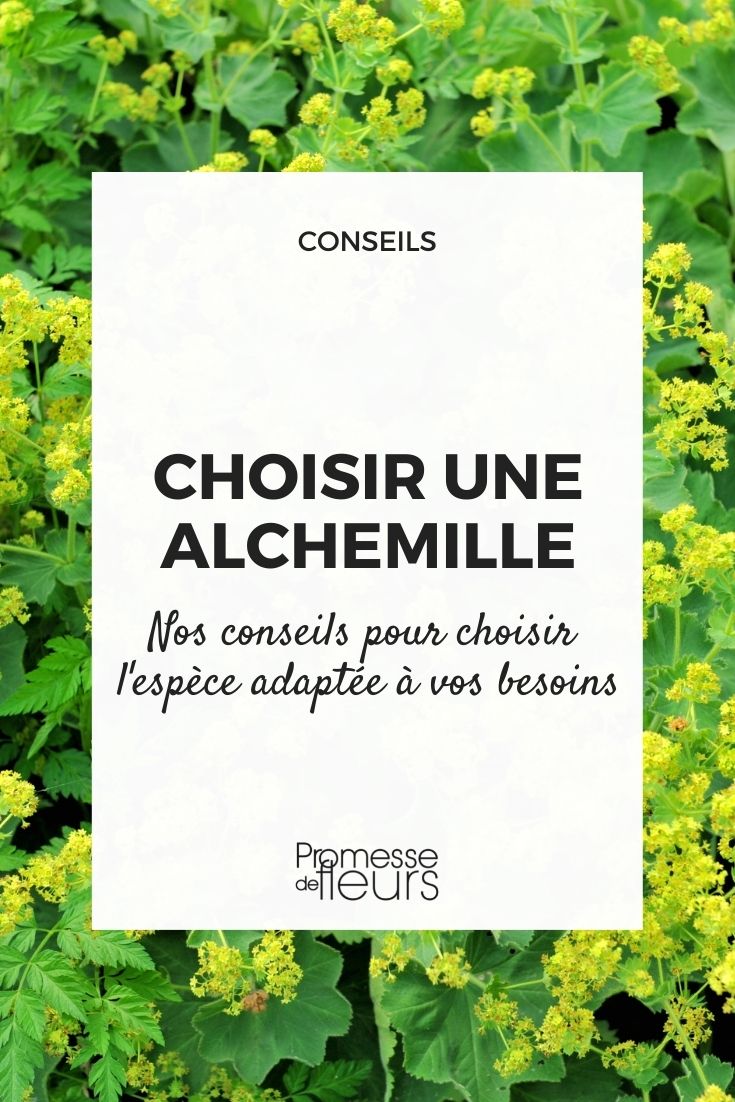































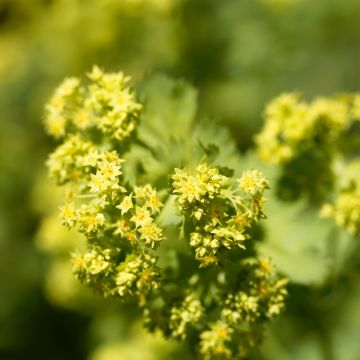
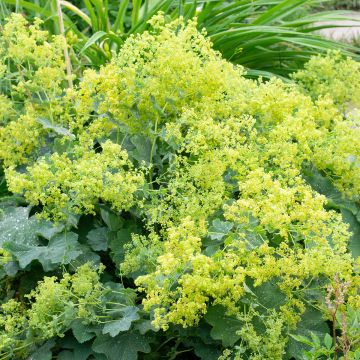
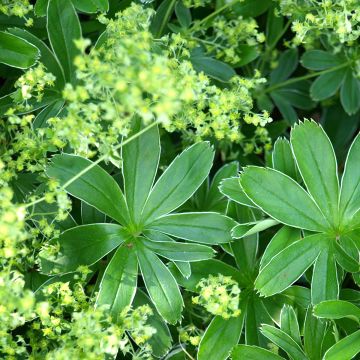
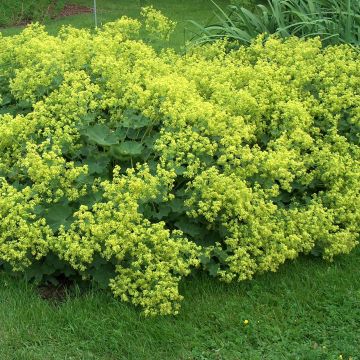
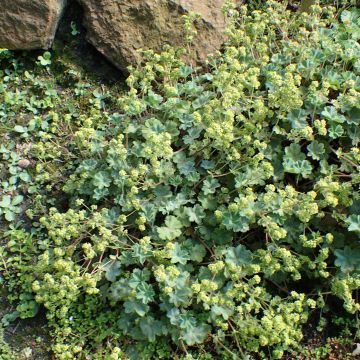
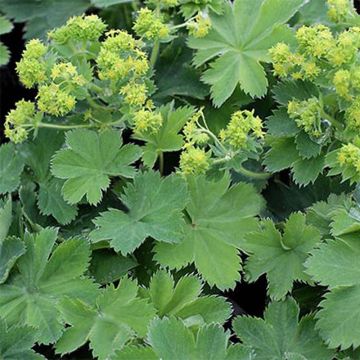
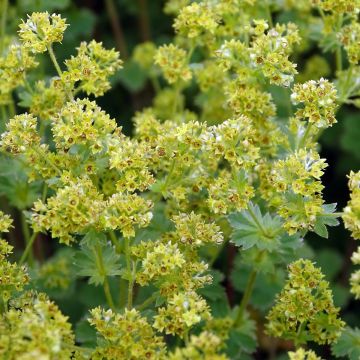
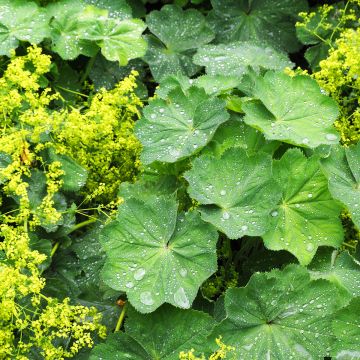
Comments